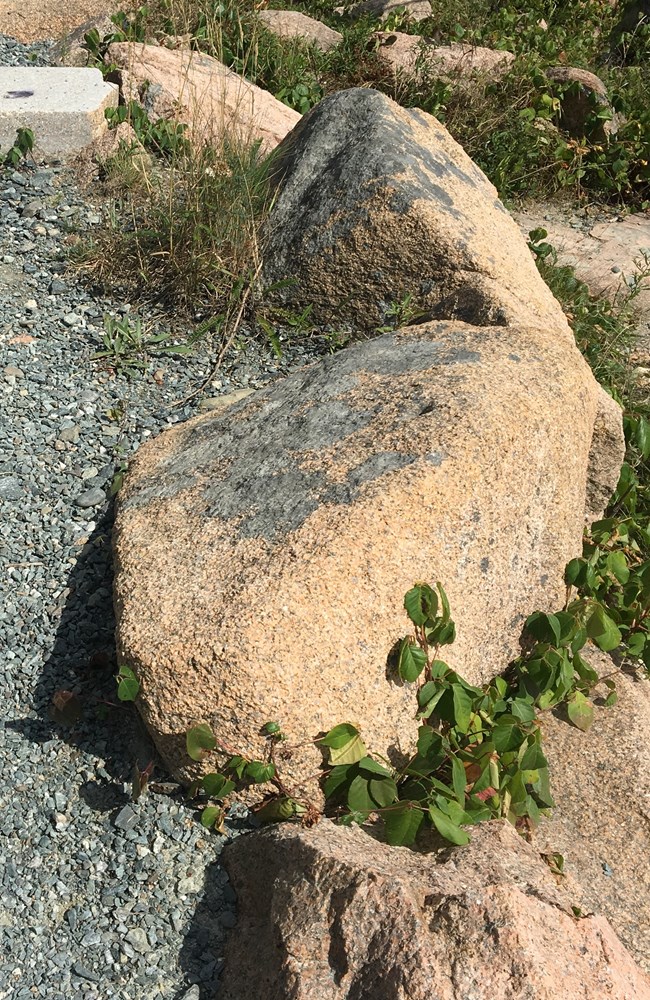Last updated: February 5, 2020
Article
Leaves of Three, Let Them Be

NPS Photo by Jesse Wheeler
Poison Ivy in Acadia
Although uncommon, poison ivy is a native plant found throughout Acadia National Park. Usually confined to rocky outcrops, open sunny areas and disturbed sites, poison ivy can be seen in popular visitor use areas such as, the Ocean Path between Sand Beach and Otter Cliffs.
Description
Poison ivy is a shrub with alternate, compound leaves containing three leaflets. The leaves are extremely variable and can range from smooth, toothed or lobed margins, and from stiff and leathery to thin and papery. They turn red, gold and purple in color in autumn.
In Acadia, poison ivy tends to grow as a sprawling shrub or small vine. Spreading by horizontal stems called rhizomes, poison ivy can carpet an area, particularly along rocks and open woods near the coast and boulder areas along mountain slopes. In some conditions, poison ivy will climb trees and other vertical substrate.

NPS Photo by Jesse Wheeler
Poison Ivy and Wildlife
Poison ivy is an important food source for wildlife, including birds and mammals that eat the fruit. Winter resident bird species often feed on them when other foods are scarce. Distribution of poison ivy is aided by birds. Many seeds go undamaged through their digestive systems and are in this way distributed around the park.
Poison Ivy and People
All parts of poison ivy contain a dangerous skin irritant that is poisonous to the touch in all seasons. Usually within two days after touching the plant or coming in contact with other objects that have touched the plant, a rash develops from an allergic reaction the poison ivy oils. In some cases, the reaction can be severe and signs should be examined by a physician.
If you have been exposed to poison ivy, wash the affected area with soap and water as soon as possible. You may also want to use skin cleansers with specially formulated to remove poison ivy oils and can be very effective if used right after contact with poison ivy. Wet compresses, taking a cool bath, and applying topical steroid creams or calamine lotion can help soothe the rash.
To prevent exposure while visiting Acadia National Park, it is important to be able to recognize poison ivy. Be alert to the many forms of poison ivy. Avoid all plants, bushes, and climbing vines with three leaflets that may have smooth or rough edges, which may be shiny or dull in appearance.
Learn more about poison ivy in New England at Native Plant Trust's Go Botany webpage.
